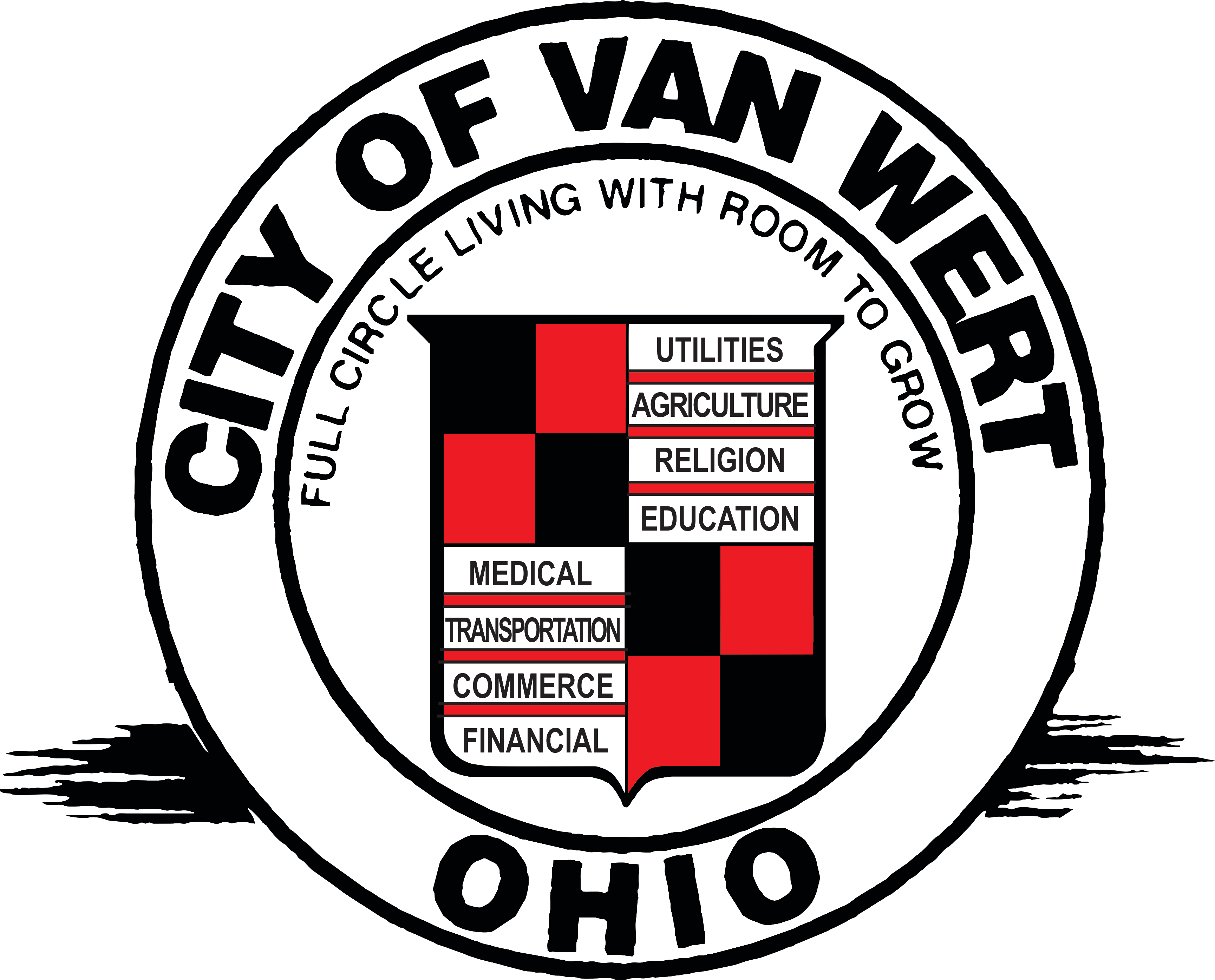CSO Annual Report
And
SSO Annual Report
are available for inspection at the Van Wert City Wastewater Treatment Plant located at
7998 US127 North Van Wert, Ohio 45891.
Any questions please call 419-238-9666.
The Wastewater Treatment Plant has five employees. The department head is involved in supervision, purchasing, training of employees, trouble shooting, and determining methods of treatment. This department has three Certified Class 2 operators, one Certified Class I operator, and one Certified Class III. These employees participate in lab work and daily plant operations.
Samples are taken of the wastewater when it first comes into the plant and after it is fully treated. Automated sampling machines take multiple samples each hour. After a 24-hour period these samples are placed into a single container. This one composite sample is then tested for CBOD, pH, dissolved oxygen, suspended solids, ammonia, and phosphorus levels.
Daily plant operations involve employees checking on equipment at each stage of the treatment process. These checks verify that the equipment is working properly. Duties also include preventative maintenance and performing any unexpected repairs. Operators routinely process the sludge into “N-Viro Soil” and maintain the grounds.
Responsibilities of these employees are not just to the treatment plant. Daily, operators also check nine waste water lift / pump stations, which are located in various parts of the City. Routine maintenance aids in the proper operation of these stations, which is a necessary part of transporting the sewage to the Waste Water Treatment Plant.
Wastewater Treatment Procedure
When the wastewater flows into the plant, it first comes in contact with a rotating pretreatment screen. This screen is a steel grid style belt, about 9 feet tall, that the water flows through. The moving belt has little arms that lift debris as the belt rotates upward and then dumps the debris, which is later hauled away.
The second stage of treatment is called de-grit. In this stage, blowers pump air near the bottom of a tank, forcing air bubble to rise throughout the tank. This action allows heavier particles to sink down to an auger that removes this sediment from the tank. The sediment is hauled to a landfill.In the third stage, gravity allows the water to flow into primary settling tanks that slow the flow, allowing time for solids such as toilet paper to settle and be separated from the water. Normally pumped upward to the Aeration tanks.
Under normal conditions, the aeration tanks are the place where the raw wastewater first comes in contact with the microorganisms. This stage is the heart of the treatment process for organic matter within the water. Here the microorganisms are balanced with the organic “food” coming into this tank, as described above on the upper level web page.
As the water leaves the aeration tank and flows to the final settling tank, alum is added.While in the final settling tank, the alum attracts phosphorus, which attaches to the alum. This gives weight to the phosphorus allowing these particles to settle within the water and become sludge. The water is sent on to the screw pumps, and the sludge is sent on to a separate destination.
At the final lift station, screw pumps allow the water to head toward its final treatment station.This last station is ultra violate disinfection that consists of special ultra violet lights that are used to kill a number of different organisms. Shown are the controls for this station. The water then flows into Town Creek.Sludge from the final settling may be diverted to different directions. When more microorganisms are needed to “eat the food” in the aeration tanks, some of the sludge containing them is recalculated from the final settling tank back to the aeration tank. When organisms are not needed, the sludge is run to the aerobic digesters. Air is added within the tank that promotes the microorganisms to feed upon themselves. More settling also occurs, with the sludge then piped across the treatment facility to an andritz press. The picture is a portion of this press, which is made up of a one meter wide vinyl style mesh belt and rollers. The sludge is evened out on the belt and then pressed against a series of rollers that squeeze the water out, producing a product called “cake sludge”. This product is hauled to another treatment plant or a farmer’s field for disposal.
